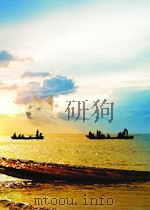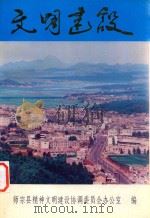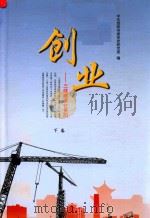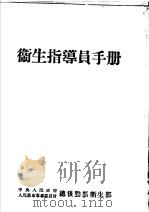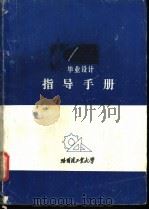《中国生态文明建设 指导手册》
| 作者 | 编者 |
|---|---|
| 出版 | 北京:北京语言大学出版社 |
| 参考页数 | 238 |
| 出版时间 | 没有确切时间的资料 目录预览 |
| ISBN号 | 无 — 求助条款 |
| PDF编号 | 817563048(仅供预览,未存储实际文件) |
| 求助格式 | 扫描PDF(若分多册发行,每次仅能受理1册) |
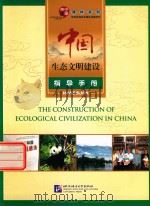
第一章中国生态环境的基本状况2
1.1多姿多彩的陆地生态系统3
1.1.1热带雨林4
1.1.2常绿阔叶林5
1.1.3落叶阔叶林6
1.1.4针叶林7
1.1.5红树林7
1.1.6稀树疏林8
1.1.7草原9
1.1.8高寒草甸10
1.1.9荒漠10
1.1.10苔原11
1.2海洋,这蓝色的生命之源12
1.2.1渤海12
1.2.2黄海12
1.2.3东海13
1.2.4南海13
1.3多样的生物是人类的朋友13
1.4自然保护地,留下生命的乐园15
1.4.1自然保护区16
1.4.2生物圈保护区16
1.4.3风景名胜区16
1.4.4地质公园16
1.4.5森林公园16
1.4.6天然林保护地17
1.4.7传统文化森林保护地17
1.4.8国际湿地17
1.4.9自然遗产17
第二章保护生态环境,转变发展方式20
2.1污染不应是发展的代价21
2.1.1寂静的春天,家乡变了21
2.1.2环境污染比比皆是22
2.1.3生态系统相继退化24
2.1.4生态环境问题导致发展受阻26
2.2环境治理,防止污染27
2.2.1从口罩热销说起27
2.2.2大气监测与治理29
2.2.3水污染治理30
2.2.4海洋环境保护31
2.3生态恢复,绿色生机32
2.3.1内蒙古沙地的奇迹32
2.3.2荒漠化治理36
2.3.3湿地修复工程37
2.3.4石漠化治理39
2.4绿色、节能、循环的发展方式41
2.4.1从快速GDp到绿色GDp41
2.4.2走向资源节约型经济43
2.4.3发展循环经济47
第三章优化发展格局,发展循环经济50
3.1优化空间发展格局51
3.1.1优化国土空间开发格局51
3.1.2生产空间集约高效53
3.1.3生活空间适宜54
3.1.4生态空间优美56
3.2发展低碳循环经济57
3.2.1秸秆的命运,三任总理的关心57
3.2.2生态农场,告别农田六害59
3.2.3低碳经济的责任63
3.2.4循环经济法出台65
3.2.5“未来500强”,世界经济的未来66
第四章 加强制度建设,扩大公众参与68
4.1生态文明建设的相关职能部门69
4.1.1 环境保护部69
4.1.2 国家林业局70
4.1.3 国家海洋局71
4.1.4 水利部72
4.1.5 农业部73
4.2生态文明建设与环境保护制度75
4.2.1 国土开发制度75
4.2.2 耕地保护制度76
4.2.3 基本草原保护制度78
4.3生态文明建设的长效机制80
4.3.1 官员环保考核制度80
4.3.2 企业经济环境评价体系82
4.3.3 环境税费制度83
4.4中国参与国际环保合作85
4.4.1 京都议定书85
4.4.2 生物多样性公约86
4.4.3 联合国防治荒漠化公约87
4.4.4 与周边国家的环境合作88
4.5公众参与生态环境建设90
4.5.1 21世纪的圆明园事件90
4.5.2 面向未来的环境教育92
4.5.3 合理的消费习惯93
4.5.4 中国环保NGO95
Part1 An Overview of China’secological environment100
1.1The diversified terrestrialecosystems101
1.1.1 Tropical rainforest102
1.1.2 Evergreen broad-leaf forest103
1.1.3 Deciduous broad-leaf forest105
1.1.4 Coniferous forest106
1.1.5 Mangrove forest107
1.1.6 Sparse forest108
1.1.7 Grassland109
1.1.8 Alpine meadow110
1.1.9 Dese111
1.1.10 Tundra112
1.2Blue ocean, the origin of life113
1.2.1 Bohai Sea113
1.2.2 Yellow Sea113
1.2.3 East China Sea114
1.2.4 South China Sea114
1.3 Diversified biology is good forhumans115
1.4Nature reserve, paradise forconserving life117
1.4.1 Nature reserve118
1.4.2 Biosphere reserve118
1.4.3 Scenic spot118
1.4.4 Geopark119
1.4.5 Forest park119
1.4.6 Natural forest reserve119
1.4.7 Forest reserves dependent ontraditional cultures119
1.4.8 International wetlands120
1.4.9 Natural heritage120
Part2 Protecting the eco-logical environmentand changing thegrowth mode122
2.1Economic growth should notspoil the environment123
2.1.1 The silent spring, changes in myhometown123
2.1.2 Environmental pollution iseverywhere124
2.1.3 Gradual ecosystem degradation127
2.1.4 Environmental problems hinderdevelopment130
2.2Environmental management and pollution prevention132
2.2.1 Brisk Mask Business132
2.2.2 Atmospheric monitoring and controlling134
2.2.3 Water pollution control135
2.2.4 Marine environmental protection137
2.3Ecological restoration, green vigor139
2.3.1 Miracles in sandy lands of Inner Mongolia141
2.3.2 Desertification control144
2.3.3 Wetland restoration program146
2.3.4 Stony desertification control149
2.4Green, energy-saving and circulargrowth mode152
2.4.1 From rapidgrowth-oriented GDp to green GDP154
2.4.2 Toward a resource-conserving economy157
2.4.3 Developing a circular economy161
Part 3 Optimizing development pattern and developing the circular economy166
3.1Optimizing spatial development pattern167
3.1.1 Optimizing development patternof China’s geographical space167
3.1.2 Intensive and effective production space170
3.1.3 Habitable living space172
3.1.4 Beautiful ecological space175
3.2Developing low-carbon-oriented and circular economy176
3.2.1 The fate of straw, the concern of three premiers 18o176
3.2.2 Ecological farm gets rid of the “6 curses” 18o176
3.2.3 The Responsibility of the low-carbon-oriented economy185
3.2.4 Promulgation of the Circular EconomyPromotion Law188
3.2.5 “The Future 500”, the future of theworld economy190
Part4 Strengthening insti-tutional building and expanding public participation194
4.1Related departments of the ecological civilization construction195
4.1.1 Ministry of Environmental Protection195
4.1.2 State Forestry Administration197
4.1.3 State Oceanic Administration199
4.1.4 The Ministty of Water Resources200
4.1.5 Ministry of Agriculture202
4.2Construction of ecological civilization and environmental protection system205
4.2.1 Territorial development system205
4.2.2 Cultivated land protection system207
4.2.3 Basic grassland protection system210
4.3Long-term mechanism for construction of an ecological civilization212
4.3.1 Assessment system for officials in terms of environmental protection212
4.3.2 Environmental impact assessment for enterprises system215
4.3.3 Environment taxation system217
4.4China's participation in international environmental cooperation219
4.4.1 Kyoto Protocol219
4.4.2 Convention on biodiversity221
4.4.3 United Nations Convention to Combat Desertification222
4.4.4 Environmental protection cooperation with neighboring countries224
4.5Public participation in the construction of the ecological environment228
4.5.1 The Old Summer Palace incident in the 21s1 century228
4.5.2 Environmental education for thefuture230
4.5.3 Rational consumption habit233
4.5.4 Environmental NGOs in China235
《中国生态文明建设 指导手册》由于是年代较久的资料都绝版了,几乎不可能购买到实物。如果大家为了学习确实需要,可向博主求助其电子版PDF文件(由 北京:北京语言大学出版社 出版的版本) 。对合法合规的求助,我会当即受理并将下载地址发送给你。
高度相关资料
-
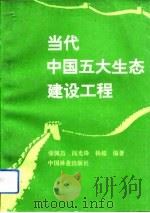
- 当代中国五大生态建设工程
- 1993 北京:中国林业出版社
-
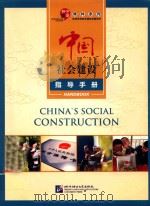
- 中国社会建设指导手册
- 北京:北京语言大学出版社
-

- 铝幕墙设计指导手册
- 1987
-

- 精神文明建设学习手册
- 鹤壁市国家税务局文明单位创建办公室
-

- 家庭教育指导手册 中学生
- 西安:陕西人民出版社
-

- 宁夏生态文明建设报告 2020
- 2020 银川:宁夏人民出版社
-

- 高等学校毕业设计 论文 指导手册 土建卷
- 1998 北京:高等教育出版社
-

- 计划生育指导手册
- 1988 武汉:武汉出版社
提示:百度云已更名为百度网盘(百度盘),天翼云盘、微盘下载地址……暂未提供。➥ PDF文字可复制化或转WORD
